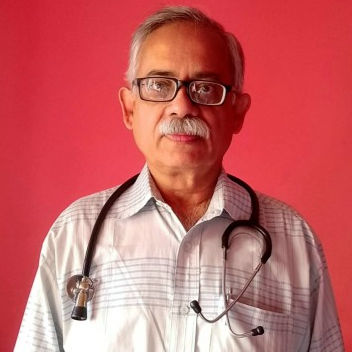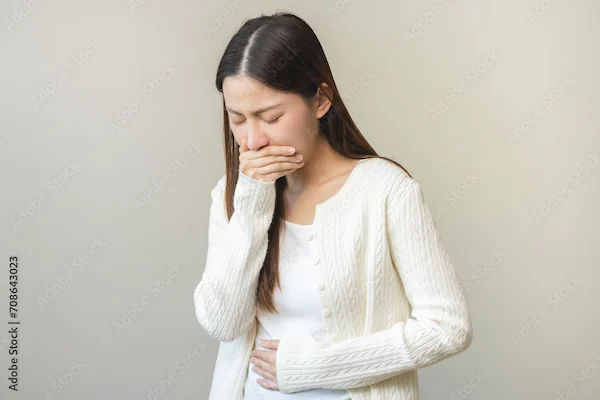What Leads To Signs Of Food Poisoning
Learn the common causes and early signs of food poisoning, including bacteria, viruses, and toxins. Understand what to look for and when to seek help.

Written by Dr. Dhankecha Mayank Dineshbhai
Reviewed by Dr. M L Ezhilarasan MBBS
Last updated on 24th Oct, 2025

Introduction
When nausea, vomiting, stomach cramps, or sudden diarrhea hit after a meal, most of us wonder the same thing: is this food poisoning? Understanding what leads to signs of food poisoning can help you act faster, avoid complications, and prevent it from happening again. Whether you ate out, reheated leftovers, or tried street food while traveling, there’s a clear set of reasons why contaminated food can trigger illness—and it almost always starts with germs, toxins, or unsafe handling.
This guide breaks down the most common culprits, where contamination happens from farm to fork, which foods are highest risk, who is most vulnerable, and how symptoms unfold. You’ll also learn when to see a doctor, what tests may be ordered, and which treatments actually help. We’ll share real-world lessons from recent outbreaks and give you prevention steps that are realistic for busy households. If symptoms persist or you’re in a high-risk group, timely medical advice is key. Let’s take a clear, no-nonsense look at food poisoning so you can protect yourself and your family.
Understanding Food Poisoning at a Glance
Food poisoning is an illness caused by consuming contaminated food or drink. Contamination can involve infectious microbes (bacteria, viruses, parasites) or toxins produced by these organisms, and occasionally chemical hazards. In the United States, the CDC estimates about 48 million people get sick from foodborne illnesses each year, leading to around 128,000 hospitalizations and 3,000 deaths [1]. Globally, foodborne disease remains a major public health burden [6].
Symptoms vary by cause but commonly include nausea, vomiting, diarrhea (sometimes bloody), abdominal cramps, fever, and malaise. The timing can be a clue: for example, Staphylococcus aureus toxin or Bacillus cereus (reheated rice) often cause vomiting within a few hours, while infections like Salmonella or Campylobacter typically take 6–72 hours to cause symptoms. Listeria can take days to weeks and is especially concerning in pregnancy because it can harm the fetus.
While most cases of food poisoning resolve within 1–3 days with rest and fluids, dehydration is the most common complication and can be serious, especially in infants, older adults, and those with chronic conditions. Because many stomach bugs share similar symptoms, it’s easy to confuse viral “stomach flu” (gastroenteritis) with food poisoning; exposure history and timing often help distinguish them. If you’re unsure and symptoms are severe or persistent, seek medical advice. Long-tail keyword naturally used: signs of food poisoning in adults; how long does food poisoning last.
Unique insight: Many people assume “leftovers” are safer because the food was already cooked. In reality, leftovers can be at higher risk if cooled slowly, stored too long, or reheated inadequately. Safe cooling and rapid refrigeration are just as important as cooking.
Consult a Top General Physician
How Contamination Turns into Symptoms
Two main mechanisms lead to the signs of food poisoning: infection and intoxication. In infections, you ingest live organisms—like Salmonella, Campylobacter, or norovirus—that colonize or invade the gut, triggering inflammation, fluid loss, and diarrhea. Fever is more common with invasive bacteria (e.g., Salmonella, Shigella). In intoxication, you ingest preformed toxins already in the food; classic examples include Staphylococcus aureus enterotoxin in creamy dishes or pastries and Bacillus cereus toxin in cooked rice that sat at room temperature. These toxins act quickly, often causing abrupt nausea and vomiting within 1–6 hours.
Incubation period—the time from eating contaminated food to symptoms—offers helpful clues. Very short onset (1–6 hours) suggests preformed toxins. Onset within 6–48 hours suggests common bacterial or viral infections (norovirus, Salmonella, C. perfringens). Longer incubation (several days to weeks) suggests pathogens like Listeria or certain parasites. This matters because it helps clinicians focus testing and treatment, especially during outbreaks.
Why the distinctive symptoms? Many pathogens provoke the intestine to secrete fluid (watery diarrhea) or damage the lining (bloody diarrhea). Toxins can stimulate the vomiting center in the brain. The body also ramps up motility to expel the threat quickly. Dehydration occurs as fluids and electrolytes are lost faster than they’re replaced. Long-tail keyword naturally used: incubation period for food poisoning; difference between stomach flu and food poisoning.
Unique insight: People often attribute quick-onset vomiting to “spicy food.” Spice itself isn’t the problem—temperature abuse of prepared foods (buffets, picnics, late-night leftovers) allows toxin-producing bacteria to multiply.
The Main Culprits: Germs, Toxins, and Chemicals
Bacteria are frequent causes of food poisoning. Salmonella is linked to poultry, eggs, and produce; symptoms usually
start 6–72 hours after eating and may include fever and diarrhea [1]. Campylobacter commonly comes from
undercooked chicken or unpasteurized milk, causing diarrhea (sometimes bloody) and cramps. Shiga toxin-producing
E. coli (e.g., O157) is associated with undercooked ground beef, leafy greens, and unpasteurized products; it can cause severe bloody diarrhea and, rarely, kidney complications. Listeria thrives in refrigerated ready-to-eat foods (deli meats, soft cheeses) and poses high risk to pregnant people and older adults due to invasive disease [1,6]. Vibrio from raw or undercooked shellfish, especially oysters, can cause illness and severe bloodstream infections in people with liver disease [1].
Viruses, especially norovirus, are highly contagious and a leading cause of foodborne illness. Norovirus spreads easily in group settings (restaurants, cruise ships), causing abrupt vomiting and diarrhea [1]. Hepatitis A, while less common, can spread via contaminated food and causes liver inflammation.
Toxin-mediated illnesses include Staphylococcus aureus (preformed enterotoxin in foods held at room temperature), Bacillus cereus (vomiting type linked to reheated rice; diarrheal type linked to sauces/meat dishes), and Clostridium botulinum (botulism) from improperly canned foods or certain preserved fish—botulism is rare but life-threatening and causes neurologic symptoms (blurred vision, weakness).
Chemical or biotoxin causes include scombroid (histamine fish poisoning) from improper fish storage causing flushing and headache shortly after eating, and ciguatera fish poisoning from reef fish, leading to gastrointestinal and neurologic symptoms. Long-tail keywords: norovirus vs food poisoning symptoms; high-risk foods for food poisoning.
Unique insight: “Cold” isn’t always safe—Listeria can grow at refrigerator temperatures, which is why deli meats and certain soft cheeses are a concern for high-risk groups.
Where and How Foods Get Contaminated
Contamination can occur at any point from farm to fork. On farms, pathogens spread through animal reservoirs (e.g., poultry with Campylobacter), contaminated irrigation water, or manure used as fertilizer. Produce can be contaminated in the field and remain contaminated through harvest. In processing facilities, lapses in sanitation or temperature control can seed large batches of foods; once contaminated, ready-to-eat items like deli meats can pass pathogens straight to consumers.
Cold-chain integrity matters: refrigeration slows bacterial growth, while temperature abuse (the “danger zone” between 5°C and 60°C / 41°F and 140°F) allows rapid multiplication of bacteria and toxin formation. In restaurants and home kitchens, cross-contamination is common: raw chicken juices dripping onto salads, shared cutting boards, or inadequately cleaned knives. Buffets and potlucks pose risk when hot foods aren’t kept hot, cold foods aren’t kept cold, or dishes are left out for hours.
Travel adds hazards: street food in areas with limited water sanitation, raw produce washed in contaminated water, and ice made from unsafe water. Even packaged foods can be problematic if supply chains are interrupted or storage temperatures are uncontrolled. Long-tail keywords: cross contamination in the kitchen; safe food temperature chart.
Unique insight: The riskiest moment isn’t always cooking—it’s the “holding” period after cooking, when food is warm and sits out. This is when toxin-producing bacteria like C. perfringens can flourish in large roasts or stews.
High-Risk Foods and Typical Incubation Times
Certain foods are repeatedly implicated in food poisoning. Poultry and eggs are linked to Salmonella and Campylobacter; undercooking or cross-contamination are common issues. Ground beef poses a risk for E. coli because bacteria from the surface can be mixed throughout; it must reach 160°F (71°C). Leafy greens and sprouts can carry E. coli or Salmonella from contaminated irrigation water; sprouts are particularly risky for pregnant people, older adults, and those with weak immune systems. Seafood and shellfish (especially raw oysters) can harbor Vibrio and norovirus; fish mishandling can cause scombroid or ciguatera.
Dairy and deli meats, if unpasteurized or handled improperly, can transmit Listeria, which has a longer incubation period (days to weeks) and serious outcomes in pregnancy. Cooked rice and pasta, if left at room temperature, can grow Bacillus cereus; vomiting can begin within 1–6 hours for the emetic form. Clostridium perfringens associated with large batches of meat or gravy often causes diarrhea and cramps 8–16 hours after eating.
Approximate incubation cues:
- 1–6 hours: Staph aureus, B. cereus (emetic)
- 8–16 hours: C. perfringens, B. cereus (diarrheal)
- 6–72 hours: Salmonella, Campylobacter, norovirus, Vibrio
- Days to weeks: Listeria, some parasites
Long-tail keywords: high-risk foods for food poisoning; what to eat after food poisoning.
Unique insight: “Healthy” choices like salads and smoothies can still be risky if produce is contaminated pre-harvest. Washing helps but doesn’t remove all pathogens that adhere to leaves or tiny crevices.
Who Is Most at Risk and Why Signs Can Be Severe
While anyone can get food poisoning, some groups are more likely to develop severe signs or complications. Infants and young children have developing immune systems and are prone to dehydration. Older adults may have reduced stomach acid and immune responses, making it easier for pathogens to establish infection and harder to recover quickly. Pregnant people are at higher risk of severe disease from Listeria, which can lead to miscarriage, stillbirth, or neonatal infection even if the mother has only mild symptoms.
People with weakened immune systems—due to conditions like cancer, HIV, diabetes with poor control, or medications such as chemotherapy or high-dose steroids—are more susceptible to severe or prolonged illness. People with liver disease are particularly vulnerable to severe Vibrio infections after eating raw oysters. Travelers can be exposed to unfamiliar pathogens and water sanitation issues; even if symptoms are mild, dehydration can escalate quickly in hot climates.
For these groups, even “routine” food poisoning can become serious. Rapid attention to hydration, early medical contact, and avoiding high-risk foods (e.g., raw sprouts, unpasteurized dairy, undercooked meats, raw shellfish) are essential. Long-tail keywords: food poisoning during pregnancy; dehydration from food poisoning.
Unique insight: Some medications (like acid-suppressing PPIs) can increase risk by lowering the stomach’s natural defenses against ingested microbes. If you use these regularly, be extra vigilant with food safety.
Recognizing Symptoms and When to See a Doctor
Common symptoms of food poisoning include sudden nausea, vomiting, diarrhea, stomach cramps, and sometimes
fever and headache. Norovirus often causes abrupt vomiting and watery diarrhea, while invasive bacteria can cause bloody stools and fever. Dehydration signs include dry mouth, dizziness, reduced urination, dark urine, and lethargy.
How long does food poisoning last? Most cases resolve within 24–72 hours. However, symptoms that persist longer—especially fever, bloody diarrhea, or severe dehydration—warrant medical care. Seek urgent help if you have:
- Blood in stool or black, tarry stools
- High fever (e.g., 39°C/102°F or higher)
- Signs of severe dehydration (very little urination, confusion, fast heart rate)
- Severe abdominal pain or persistent vomiting
- Neurologic symptoms (blurred vision, weakness; potential botulism)
- You’re pregnant, very young, older, or immunocompromised and feel unwell
If symptoms persist beyond two to three days, if you can’t keep fluids down, or if you’re in a high-risk group, consult a doctor online with Apollo24|7 for further evaluation. They can advise on hydration, medications, and whether tests are needed. Long-tail keywords: when to see a doctor for food poisoning; symptoms of food poisoning in adults.
Unique insight: Many people stop drinking because “everything comes back up.” Small, frequent sips (every 5 minutes), oral rehydration solutions, and ice chips often succeed where big gulps fail.
Diagnosis and Tests Your Doctor May Order
Diagnosis starts with your story: what you ate, where, who else is ill, how soon symptoms started, and key features (vomiting vs. diarrhea, fever, blood in stool). This exposure history often suggests the cause and whether tests are necessary. Many mild cases don’t need lab tests and improve with supportive care.
When testing is indicated, stool multiplex PCR panels can rapidly detect common bacterial, viral, and parasitic pathogens. Stool culture may be used for bacterial identification and antibiotic sensitivity, especially if there is bloody diarrhea, high fever, or public health concerns. Ova-and-parasite exams are considered when symptoms last longer or travel exposures are likely. Blood tests can assess dehydration (electrolytes, kidney function) or inflammation. In clusters (e.g., multiple people sick after an event), public health departments may coordinate testing and outbreak investigation.
If your doctor recommends labs, Apollo24|7 offers a convenient home collection for certain tests to minimize travel while you’re unwell. If your condition does not improve after trying home care, book a physical visit to a doctor with Apollo24|7. Long-tail keywords: diagnosis of food poisoning; home collection stool test.
Unique insight: Exact identification of the pathogen doesn’t always change treatment, but it can be crucial for public health to pinpoint contaminated foods and prevent more illnesses.
Treatment at Home and in Clinic: What Works
Rehydration is the cornerstone. Use oral rehydration solutions (ORS) or make a simple mix at home (clean water, a little sugar and salt). Take small sips every few minutes, especially after each bout of diarrhea or vomiting. As symptoms ease, resume eating with bland, easily digestible foods—bananas, rice, applesauce, toast, soups—then return to a normal balanced diet as tolerated. Avoid alcohol and high-fat, very spicy, or very sugary foods initially. Probiotics may modestly shorten diarrhea duration in some cases, though evidence is mixed.
Antidiarrheals like loperamide can be helpful for watery diarrhea without fever or blood, but avoid them if you suspect invasive bacterial infection (bloody stools, high fever). Antiemetics (e.g., ondansetron) can reduce vomiting; consult a clinician, especially for children or pregnant individuals. Antibiotics are rarely needed and can worsen some infections (e.g., Shiga toxin-producing E. coli). They may be considered for severe or high-risk cases of specific bacterial infections. Botulism requires urgent antitoxin and hospital care; infants should never be given honey due to botulism spore risk.
If symptoms persist beyond two to three days, if you can’t stay hydrated, or if you belong to a high-risk group, consult a doctor online with Apollo24|7. They can guide medication use and determine if you need tests or IV fluids. Long-tail keywords: treatment for food poisoning at home; what to eat after food poisoning.
Unique insight: Fast recovery isn’t about “resting the gut” completely—gentle early feeding with appropriate foods actually helps repair the intestine and shorten illness in many cases.
Prevention That Actually Works
Food poisoning prevention hinges on a few high-impact habits:
- Clean: Wash hands with soap for 20 seconds before cooking and eating; clean fruits and vegetables under running water. Sanitize surfaces and utensils after contact with raw meat. Separate: Use separate cutting boards/plates for raw meats and ready-to-eat foods. Keep raw meat sealed on the bottom shelf of the refrigerator to prevent drips.
- Cook: Use a food thermometer. Key safe internal temperatures include 165°F (74°C) for poultry and leftovers, 160°F (71°C) for ground meats, and 145°F (63°C) with a 3-minute rest for whole cuts of meat and fish. Chill: Refrigerate within 2 hours (1 hour if above 32°C/90°F). Cool large batches by dividing into shallow containers. Reheat leftovers to 165°F (74°C) and don’t keep them for more than 3–4 days.
- Dining out and travel: Choose reputable venues with good turnover, eat foods cooked to order and served hot, avoid raw or undercooked eggs/meat/seafood, and be cautious with raw produce if water quality is uncertain. High-risk groups should avoid raw sprouts, unpasteurized dairy, and deli meats unless heated to steaming.
- Myths vs facts: Smell is not a reliable safety test—many dangerous pathogens don’t change odor, taste, or appearance. “Five-second rule” is a myth; floors can contaminate food instantly. Long-tail keywords: safe food temperature chart; home remedies for food poisoning.
Unique insight: The two most effective tools most home cooks don’t use consistently are a timer and a thermometer. Together, they dramatically reduce undercooking and temperature abuse.
Citations: [1,6,7,8]
Case Studies: What Recent Outbreaks Teach Us
- Leafy greens and E. coli: Several multistate outbreaks linked to romaine lettuce have highlighted how irrigation water and processing can spread contamination; washing at home can’t remove all bacteria adhered to leaves.
- Deli meats and Listeria: Outbreaks emphasize that Listeria can survive and grow in cold environments; high-risk groups
should reheat deli meats until steaming. - Restaurants and norovirus: Person-to-person spread by ill food handlers is a frequent driver; strict illness policies and hand hygiene are critical.
Conclusion
Food poisoning is common, but it isn’t random. Clear patterns—who prepared the food, how it was handled, the temperature it was kept at, and which foods were involved—explain why symptoms happen and how severe they become. Understanding these patterns lets you act quickly: prioritize hydration, watch for red flags, and seek timely care if symptoms are severe, prolonged, or you’re in a higher-risk group.
The practical steps are simple but powerful: wash hands and surfaces, keep raw and ready-to-eat foods separate, cook with a thermometer, and refrigerate promptly. Pay special attention to leftovers and big-batch foods—these are often where toxin-producing bacteria gain the upper hand. If you’re pregnant, older, immunocompromised, or traveling, tailor your choices by avoiding high-risk foods like raw sprouts, unpasteurized dairy, undercooked meats, and raw shellfish.
If symptoms persist beyond two to three days, if you can’t keep fluids down, or if you’re concerned for any reason, consult a doctor online with Apollo24|7 for further evaluation. If your condition does not improve after trying these methods, book a physical visit to a doctor with Apollo24|7. For tests your clinician orders, Apollo24|7 offers a convenient home collection for certain labs. With the right know-how and a few consistent habits, you can dramatically reduce your risk and handle most mild cases at home safely.
Consult a Top General Physician
Consult a Top General Physician

Dr. Rajib Ghose
General Physician/ Internal Medicine Specialist
25 Years • MBBS
East Midnapore
VIVEKANANDA SEBA SADAN, East Midnapore

Dr. Md Yusuf Shareef
General Practitioner
8 Years • MBBS
Hyderabad
Apollo 24|7 Clinic, Hyderabad

Dr. Syed Ismail Ali
General Practitioner
7 Years • MBBS
Hyderabad
Apollo 24|7 Clinic, Hyderabad

Dr. Sougata Kumar
General Practitioner
8 Years • MBBS
East Midnapore
VIVEKANANDA SEBA SADAN, East Midnapore

Dr. Pinaki Mukhopadhyay
General Physician/ Internal Medicine Specialist
32 Years • MBBS
Kolkata
MCR SUPER SPECIALITY POLY CLINIC & PATHOLOGY, Kolkata
(25+ Patients)
Consult a Top General Physician

Dr. Rajib Ghose
General Physician/ Internal Medicine Specialist
25 Years • MBBS
East Midnapore
VIVEKANANDA SEBA SADAN, East Midnapore

Dr. Md Yusuf Shareef
General Practitioner
8 Years • MBBS
Hyderabad
Apollo 24|7 Clinic, Hyderabad

Dr. Syed Ismail Ali
General Practitioner
7 Years • MBBS
Hyderabad
Apollo 24|7 Clinic, Hyderabad

Dr. Sougata Kumar
General Practitioner
8 Years • MBBS
East Midnapore
VIVEKANANDA SEBA SADAN, East Midnapore

Dr. Pinaki Mukhopadhyay
General Physician/ Internal Medicine Specialist
32 Years • MBBS
Kolkata
MCR SUPER SPECIALITY POLY CLINIC & PATHOLOGY, Kolkata
(25+ Patients)
More articles from Food Poisoning
Frequently Asked Questions
1) How long does food poisoning last?
Most cases resolve within 24–72 hours. If symptoms last longer—especially with fever or blood in stool—consult a doctor online with Apollo24|7.
2) What should I eat after food poisoning?
Start with small sips of oral rehydration solution, then bland foods like bananas, rice, applesauce, toast, broths. Resume a normal balanced diet as tolerated.
3) Is it food poisoning or stomach flu?
Timing and exposure help: very rapid onset after a risky meal suggests food poisoning; a sick contact or community outbreak suggests viral gastroenteritis. When in doubt, seek advice.
4) When should I see a doctor for food poisoning?
Seek care for severe dehydration, high fever, bloody stools, severe pain, pregnancy, very young/older age, or symptoms beyond two to three days. Apollo24|7 doctors can guide the next steps.
5) Can I take anti-diarrheal medicine?
For watery diarrhea without fever or blood, short-term loperamide may help. Avoid if you suspect invasive infection. If unsure, consult Apollo24|7 before taking medications.
